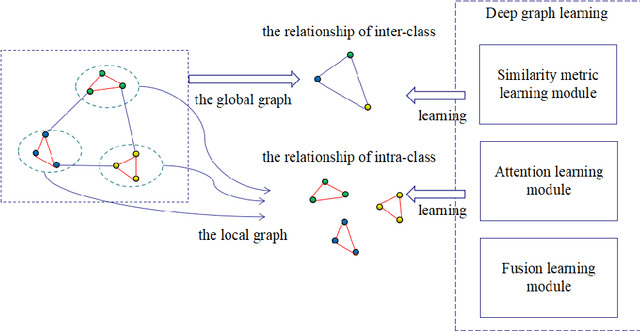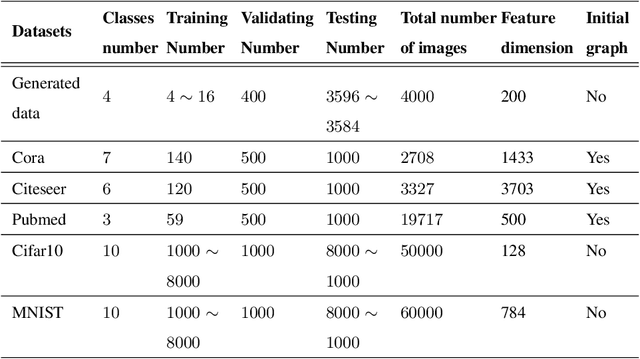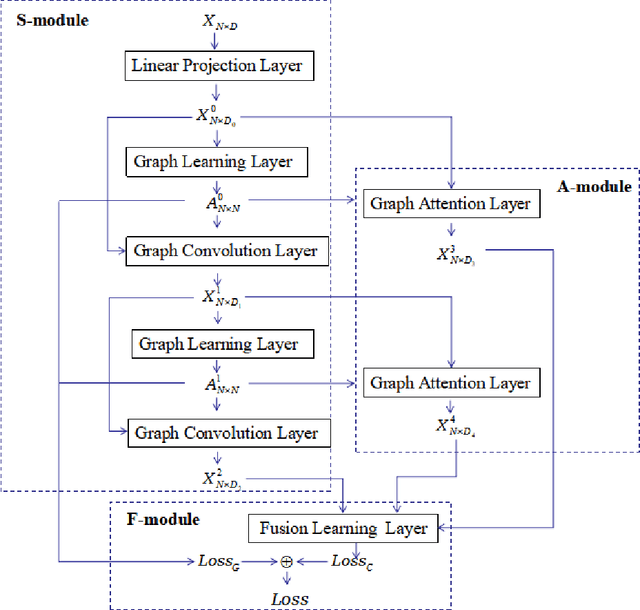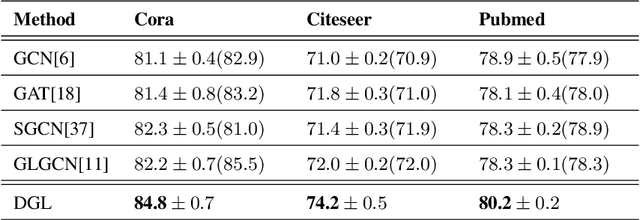Deep graph learning for semi-supervised classification
Paper and Code
May 29, 2020



Graph learning (GL) can dynamically capture the distribution structure (graph structure) of data based on graph convolutional networks (GCN), and the learning quality of the graph structure directly influences GCN for semi-supervised classification. Existing methods mostly combine the computational layer and the related losses into GCN for exploring the global graph(measuring graph structure from all data samples) or local graph (measuring graph structure from local data samples). Global graph emphasises on the whole structure description of the inter-class data, while local graph trend to the neighborhood structure representation of intra-class data. However, it is difficult to simultaneously balance these graphs of the learning process for semi-supervised classification because of the interdependence of these graphs. To simulate the interdependence, deep graph learning(DGL) is proposed to find the better graph representation for semi-supervised classification. DGL can not only learn the global structure by the previous layer metric computation updating, but also mine the local structure by next layer local weight reassignment. Furthermore, DGL can fuse the different structures by dynamically encoding the interdependence of these structures, and deeply mine the relationship of the different structures by the hierarchical progressive learning for improving the performance of semi-supervised classification. Experiments demonstrate the DGL outperforms state-of-the-art methods on three benchmark datasets (Citeseer,Cora, and Pubmed) for citation networks and two benchmark datasets (MNIST and Cifar10) for images.
 Add to Chrome
Add to Chrome Add to Firefox
Add to Firefox Add to Edge
Add to Edge